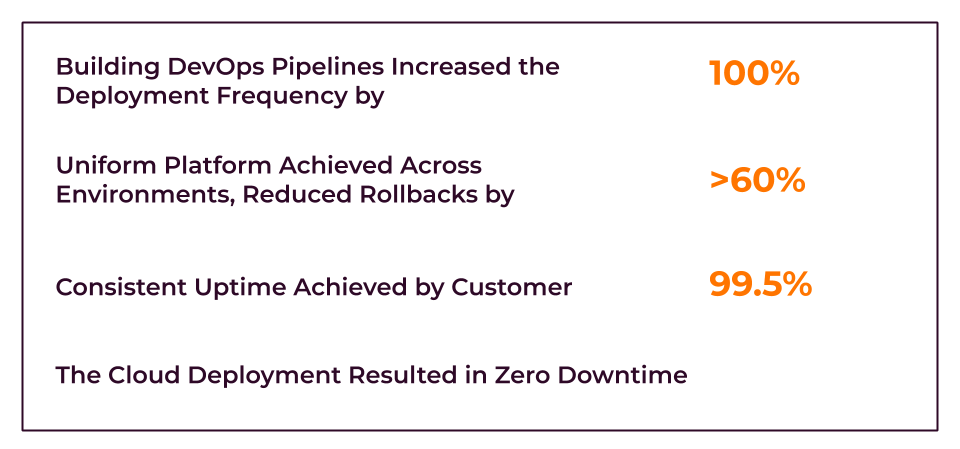The customer is a global insurance company, which offers a wide spectrum of insurance products & services. The company owns (in part or whole) local insurance companies in nearly 20 countries. The customer had the directive to migrate from their on-premise deployment to the AWS cloud for all of their operations. Blazeclan helped the customer migrate almost 5 country operations to the AWS cloud.
The Directive to Move From On-Premise to AWS Cloud
The customer wanted to shift their operations in different countries to the AWS cloud and Blazeclan helped with its unique cloud-based approach. Their operations of the customer were hosted out of the Singapore regional data centre. The migration of the customer’s operations were supposed to be accompanied with pre-production & production environments, all applications with separate tests, modernization without significant downtime, and complete CI/CD pipelines. Key Objectives of the customer include:
- Closure of the Regional Data Center for Singapore before the deadline of June 2019
- Complete automation of deployment pipelines for Singapore standardised across teams
- Upgradation of technology stack with a standardised stack of Java and Oracle on Linux
- Containerization of API stacks to make the changes easy and non-conflicting
- Completing the environment stack for all applications to make release management & agile development controlled and possible
The Solution
Blazeclan helped the customer in the assessment of their 5 country operations, which included Singapore and Hong Kong. The portfolio for operations of the customer in Hong Kong was smaller, with their core applications being COTS products. This was why, standard pipelines such as Jenkins, Bitbucket and Cloudformation were used for migrating the customer operations in Hong Kong to AWS cloud. For the customer operations in Singapore, the cloud migration process involved re-architecting in the following order:
- Building pipelines with the help of CloudFormation, Ansible toolset, Jenkins, and Bitbucket.
- Migrating all the application programming interfaces (APIs) to AWS ECS Fargate.
- Migrating the portal applications to Amazon EC2, wherein the pipelines are built with the help of Jenkins and Terraform.
- Migrating the complete codebase from existing SVN to Bitbucket to enable complete automation of the CI/CD pipelines.
- Identifying the APIs to move the functionalities to the core applications on the AWS cloud.
- Migrating all the databases to AWS RDS for the COTS applications.
All the Amazon Machine Images (AMIs), as well as the target stacks, have been designed & created by the customer. The automated pipelines have been used for the AWS cloud deployment. For all the external-facing APIs and applications, Akamai has been implemented on the public load balancers. All the Java-based applications have been moved to the Amazon ECS Fargate on Linux. The creation of instances and clusters have been automated with the help of Terraform and CloudFormation.
Benefits Achieved by the Customer
Automation: Automated security operations and their integration into the deployment pipeline enabled the customer’s application teams to scale their deployment speed, without compromising their overall application security. This further helped the customer in reducing time & resources required in their processes, compared to manual efforts.
High Scalability: The migration provided the customer with the ability to scale their infrastructure according to the business demand alterations. Cloud migration enabled a new auto-scaling feature with minimum or zero downtime.
Improved Performance: The customer experience was significantly enhanced with the cloud migration, owing to the scalable and agile nature of the deployment compared to their legacy on-premise deployment.

Tech Stack
| Amazon CloudFormation | AWS ECS Fargate | Amazon EC2 |
| Amazon RDS | Amazon Machine Images (AMIs) | Bitbucket |
| Jenkins | Ansible | Terraform |

























